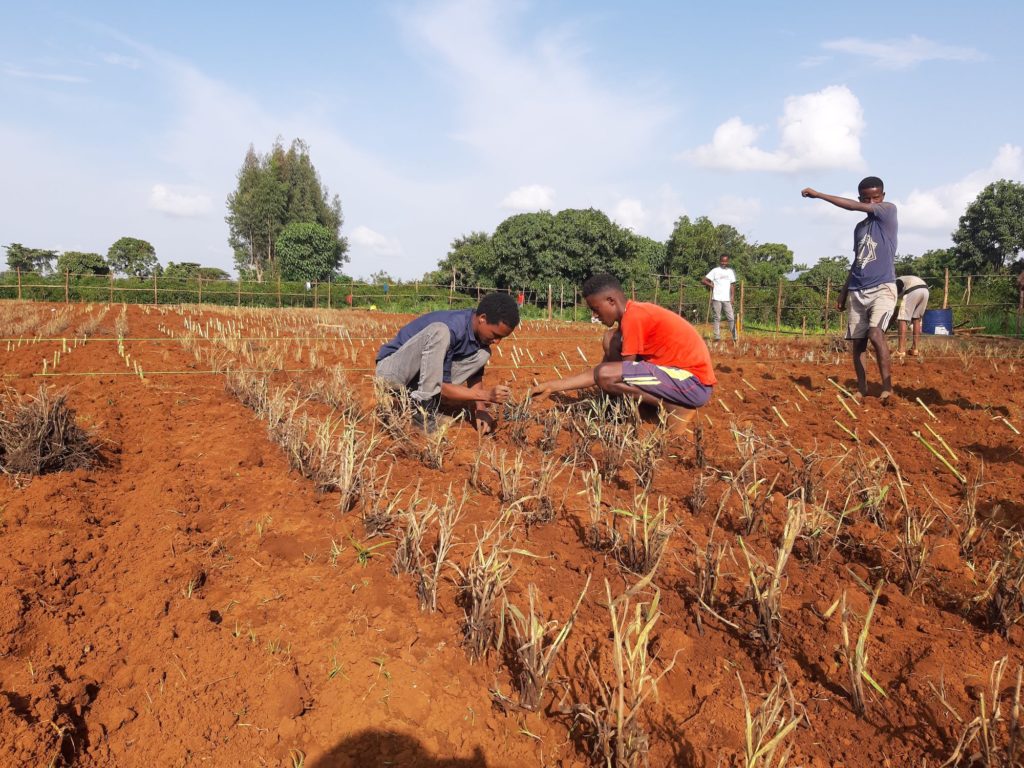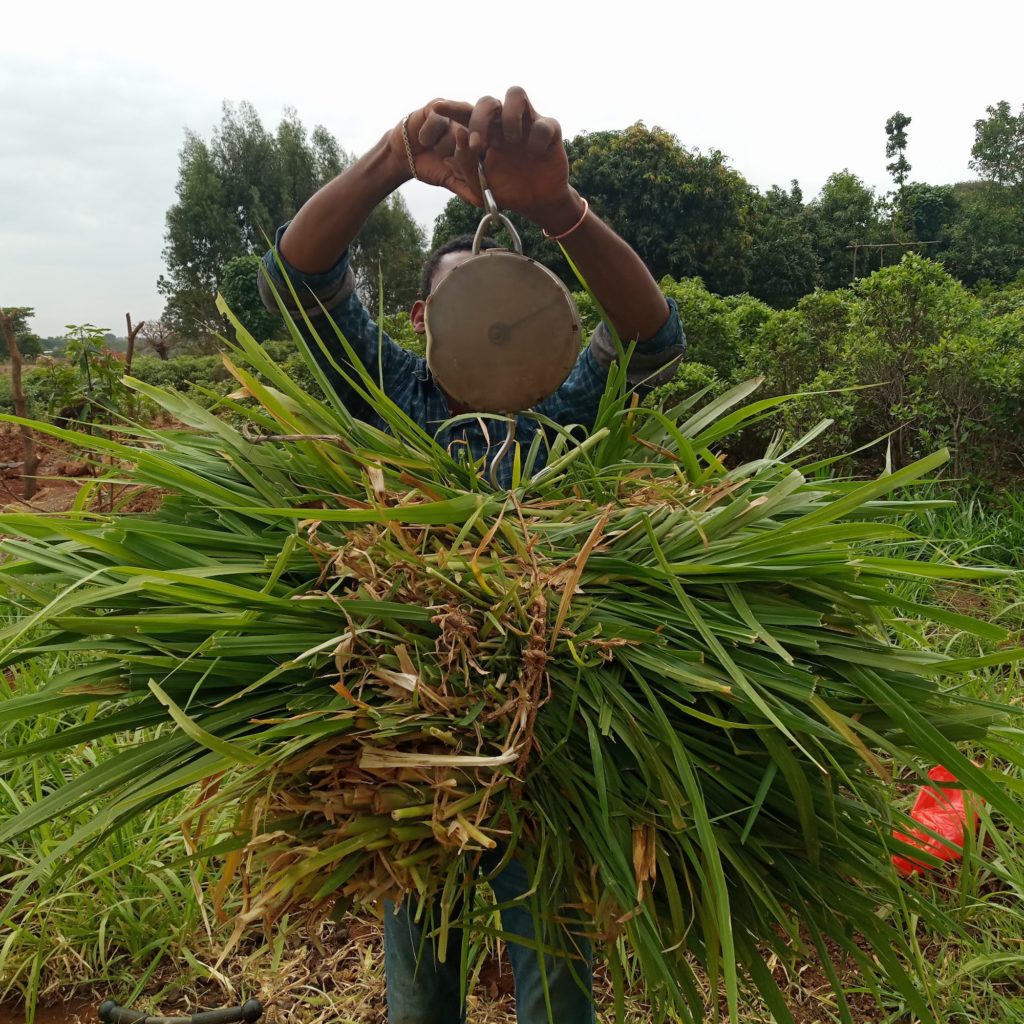Misba Abdela is a lecturer and PhD student at Bahir Dar Institute of Technology, Bahir Dar University, in Ethiopia. In March 2020, he joined the International Livestock Research Institute (ILRI) as a PhD graduate fellow, supported by the Feed the Future Innovation Lab for Small Scale Irrigation (ILSSI). Abdela previously worked with ILSSI researchers to study the effect of deep tillage on groundwater recharge as part of his MSc work.

You have won a fellowship to conduct your PhD research on irrigated fodder cultivations. How did you get interested in this topic?
In Ethiopia, livestock play a vital role in smallholders’ livelihood by providing food, cash income, farm power, and other inputs such as manure to improve crop production. However, the productivity of livestock has remained very low due to various constraints, with feed shortages—both in quantity and quality—being the major one.
Feed shortages are aggravated by limited investment in feed and forage development and by the increased expansion of cropland, to the extent of encroaching into grazing land. As a result, the ‘business-as-usual’ approach to livestock feed sourcing is no longer a viable option, and there is an urgent need to optimally use available land, water, and capital resources to produce high-quality fodder for a sustainable livestock feed supply and production system. The increasing demand for livestock products, together with the shortage of feed and of the complex layers of challenges posed by climate change, justifies the need for alternative feed production and supply systems in the nation.
Before I joined this fellowship, I was doing research on farmer-managed irrigated fodder production, funded by the Appropriate Scale Mechanization Consortium (ASMC) project in collaboration with ILRI and Bahir Dar Institute of Technology, under which farmers received solar pumps (Maji pumps) and water storage tanks for irrigation use. While conducting this research, I understood farmers’ willingness to engage more in fodder production and their interest in potential alternative fodder crops with higher regenerative capacity and biomass yield per unit of land. Therefore, I was very happy when I got the opportunity to continue my PhD research in the area of irrigated fodder production.
What’s a poorly understood aspect of irrigated fodder cultivation?
Information on the suitability of fodder varieties, and their responses to nutrient and water when they are produced under irrigation, is largely lacking in the Highlands of Ethiopia. Therefore, the main aim of our study is to investigate the performances of selected fodder species under different nutrient and moisture-input regimes.
Particularly, our study will explore yields and nutritional value of ten selected species and cultivars of fodder under optimal moisture conditions, under the conditions of drought stress, and under different nutrient application rates. We will also explore viable economic and agronomic scenarios of irrigated fodder production within the smallholder farmer setting in Ethiopia.

What would be the gains of scaling up irrigated fodder production and who could benefit?
Scaling up fodder production would have great benefits. It would solve the feed challenge in local communities. Availability of a high-producing forage for livestock would benefit women by reducing the time they spend looking for feed; it would improve food security and household nutrition because of improved livestock productivity (more milk and milk products such as cheese and butter).
Also, producing high-quality fodder crops would reduce free grazing and allow farmers to adopt a ‘cut-and-carry feeding system’ – cutting and carrying feed to the animals in their corrals, rather than letting the animals roam free. In turn, zero or reduced grazing then create opportunity for girls to attend school as it is otherwise often the girls who are often kept home from school to look after the cattle.
Fodder production would also bring other benefits to the landscape: Fodder crops like Napier grass are deep rooted, and planting these on a large scale would minimize runoff as well as soil and nutrient loss from farm fields. This would result in reduced soil nutrient losses and contaminant fluxes into Lake Tana, and it would help to combat the rapidly expanding water hyacinth, which is endangering the lake. At a larger scale, limiting the growth of water hyacinth will in turn help to regulate water flow downstream, to the Grand Ethiopian Renaissance Dam (GERD) reservoir.
What are the biggest challenges to making irrigated fodder cultivation more widespread?
Identifying the major challenges to making irrigated fodder production more widespread might require more studies. Some of the major challenges may include farmers’ awareness in the area of irrigated fodder – for example, farmers might prefer to produce and irrigate vegetables or cereal crops rather than fodder crops due to a lack of knowledge on the comparative advantages. Another major challenge is market linkages, as it is difficult for farmers to get seeds of different fodder crops and to sell the excess fodder that they produced.
What do you hope your work can contribute to in the future?
At the end of this research, we hope we will be able to identify the best fodder crops that are suitable for the agro-climatic conditions of the Ethiopian Highlands. Improved fodder crops—both in quantity and quality—would mean fodders with higher biomass per unit of land, higher regenerative capacity, higher production per unit of water and nutrients inputs, higher nutritional quality, and higher cost-benefit ratios. Identifying these best-bet fodder crops would solve the feed problem of the communities, improving the livestock production, incomes, and livelihoods of farmers in the nation.


